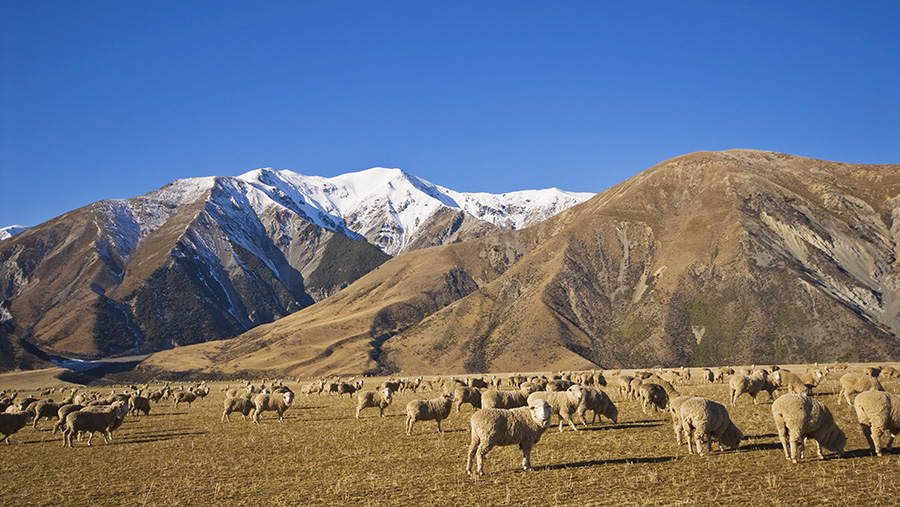High NZ lamb exports criticised for ‘disrespecting’ UK season
 © Terry Whittaker/FLPA/Imagebroker/Rex/Shutterstock
© Terry Whittaker/FLPA/Imagebroker/Rex/Shutterstock New Zealand lamb exports to the UK jumped 84% in November to 5,600t, as the county’s overall exports of sheepmeat hit its highest level for 15 years.
The NFU criticised New Zealand for no longer respecting the British lamb season, as the latest data from the New Zealand government showed sheepmeat exports to the UK were up 77% in November to 6,000t.
Both farmer organisation Beef and Sheep New Zealand and AHDB Beef and Lamb said this had been due to higher slaughterings (up 24% in November on the previous year, at 1.6m head), as drought-hit producers, particularly in the south island marketed their lamb earlier.
This, combined with high volumes in cold storage from last season, increased the amount of sheepmeat available.
See also: New Zealand sheep production fall could benefit UK producers
With the New Zealand dollar weak, prices were depressed by 4% in November and made te country’s produce more competitive on the global market, said AHDB.
Respect for UK season gone
The drought had meant New Zealand meat flooded the UK market leading up to Easter and beyond, said John Royle, chief livestock advisor at the NFU.
However, he questioned whether the New Zealand lamb entering the UK market in November was new season produce, or rather “old season lamb kicking around”.
“[This] hit the UK market in larger volumes than we’d seen previously from Sept through until November, just when we have plenty of great quality new season British lamb around.
“We find [this] particularly worrying if this is being promoted through the retailers, when the quality of British lamb is excellent at this time of year.”
He added that New Zealand’s “respect for the UK season is pretty much gone.”
He said it was difficult to know whether the New Zealand meat was going into retail, wholesale or food service and asked that AHDB try to find this out.
New Zealand’s use of quota questioned
Mr Royle said he was concerned about New Zealand’s misuse of its quota for sheepmeat with the EU and that it had gradually crept into exporting higher value cuts.
The quota, which was agreed in the 1980s, covered “overwhelmingly” frozen sheepmeat and carcasses, said Mr Royle.
But New Zealand was now exporting fresh (or “chilled”) meat – accounting for 44% in 2014 as opposed to 1% in 1990– and had switched to bone-in cuts – 98% in 2014 compared with 47% in 1990.
“The use of NZ quota has fundamentally changed, and we believe is undermining the UK and European sheep markets at the most sensitive times of the year – we have seen an increase in volumes and value of fresh cuts coming onto the UK market in September, October and now November.”
AHDB added: “However, with a smaller lamb crop reported in New Zealand, earlier slaughterings may lead to a tightening of supplies as we move into the second and third-quarters of this year.”
Beef and Lamb New Zealand has forecast the country’s sheepmeat export volumes to fall 6.3% in the 2015-16 season as a result of a smaller flock after drought.
New Zealand is the world’s biggest sheepmeat producer and is British farmers’ biggest competitor on the UK domestic and European markets, but the New Zealand drought could be a chance for UK producers to fill in the volume gap.
